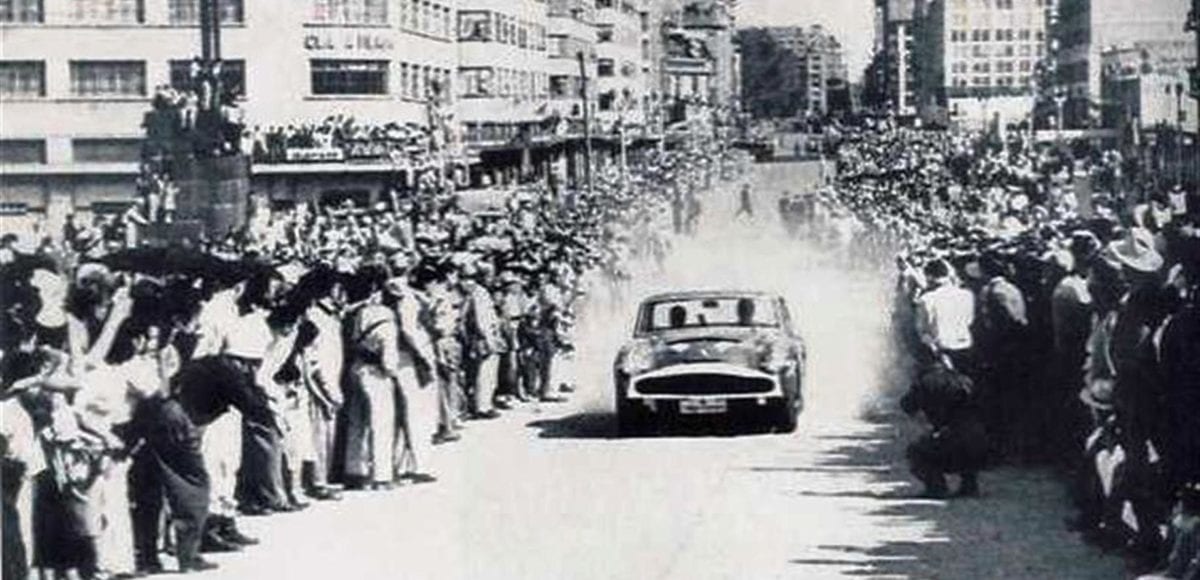It only took five years for the Carrera Panamericana to establish itself as one of the world’s most exciting and deadly races.
From 1950 to 1954, the Carrera Panamericana was a border-to-border road race along the new Pan-American Highway, which covered 2,170 miles from Mexico’s northern border with the United States to Ciudad Cuauhtémoc in the far south of the country.
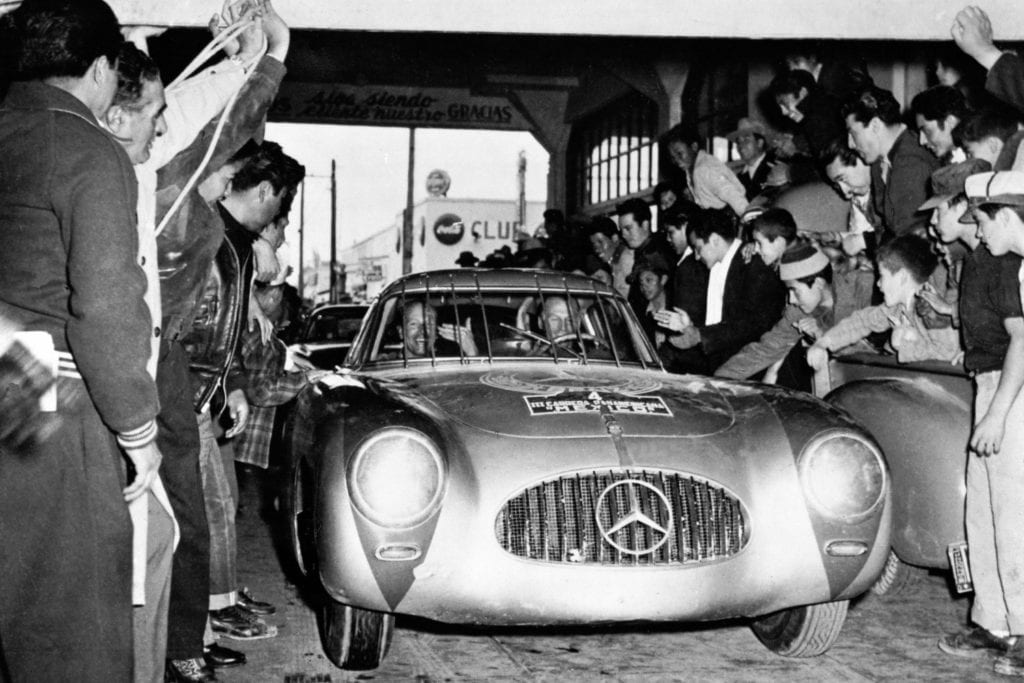
Carrera Panamericana, Mexico, 1952.
The first race attracted a who’s who of international racers. NASCAR founder Bill France Sr. took part, as did Italian Formula One racers Piero Taruffi and Felice Bonetto. It also attracted a who’s who of car manufacturers, from Cadillac and Oldsmobile to Porsche and Alfa Romeo.
From its very first year, the race earned a reputation for danger. Three competitors and one race spectator were killed during the first event—the first of 27 people whose lives were lost during the event’s five-year history.
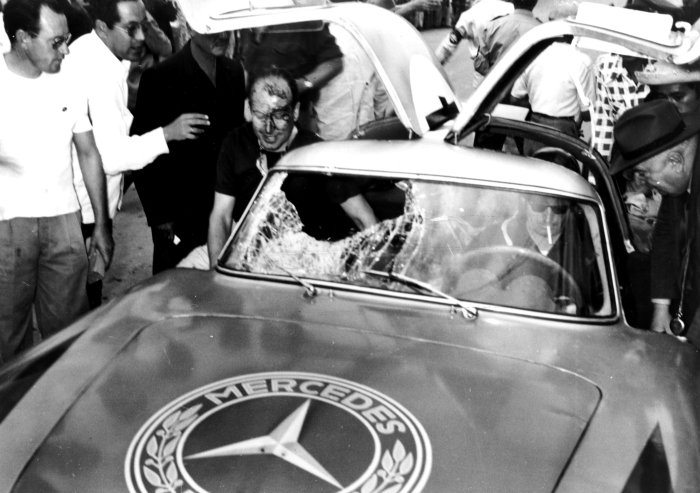
Despite its bloody history and incredible danger–or perhaps in part because of it–the Carrera Panamericana became something of a legend among racing enthusiasts. Porsche named their iconic 911 after the race, as well as their four-door Panamera.
The Carrera Panamericana also inspired one of the world’s most iconic wristwatches: the Heuer Carrera.
Jack Heuer’s Inspiration
1962 was a big year for Heuer. Jack Heuer, who won control of the company in early 1962 after buying his uncle’s shares, watched as American astronaut John Glenn wore a Heuer stopwatch aboard the Mercury Atlas 6, making a Heuer the first Swiss watch to travel to space. Later that year, Heuer released the Autavia—an innovative chronograph with a rotating bezel, named after one of Heuer’s discontinued dashboard stopwatches.
1962 was also the year Jack Heuer found the inspiration for what would go on to become one of the brand’s most recognizable wristwatches: the Heuer Carrera.
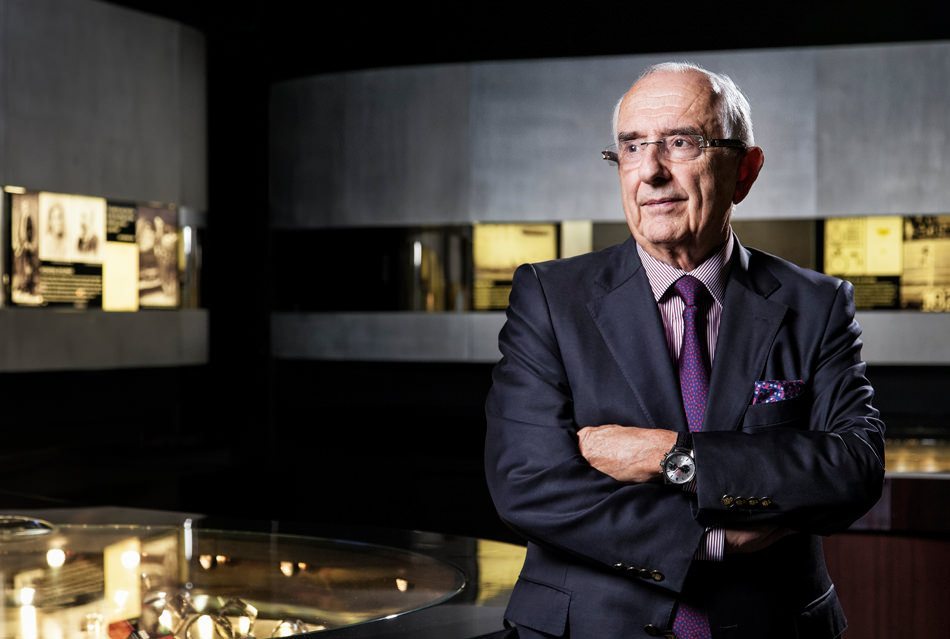
The Sports Car Club of America, which used Heuer’s stopwatches to time its races, invited Jack to the 1962 12 Hours of Sebring event. Jack, a racing enthusiast, gravitated towards the Ferrari pit and found himself chatting to the parents of Ricardo and Pedro Rodríguez de la Vega.
Then 20 and 22 years old, the Rodriguez brothers had become international names. During the course of their conversation with Heuer, the boys’ parents mentioned that they were happy their children’s’ careers had started after the Carrera Panamericana had come to an end. Sensing an opportunity in the name of the event, Jack took note of it and later registered it for Heuer. Carrera, which simply means “race” or “career” in Spanish, was an ideal match for Heuer: it was closely associated with racing, it was easily remembered, and it was easy to pronounce in any language.
Creating the Heuer Carrera
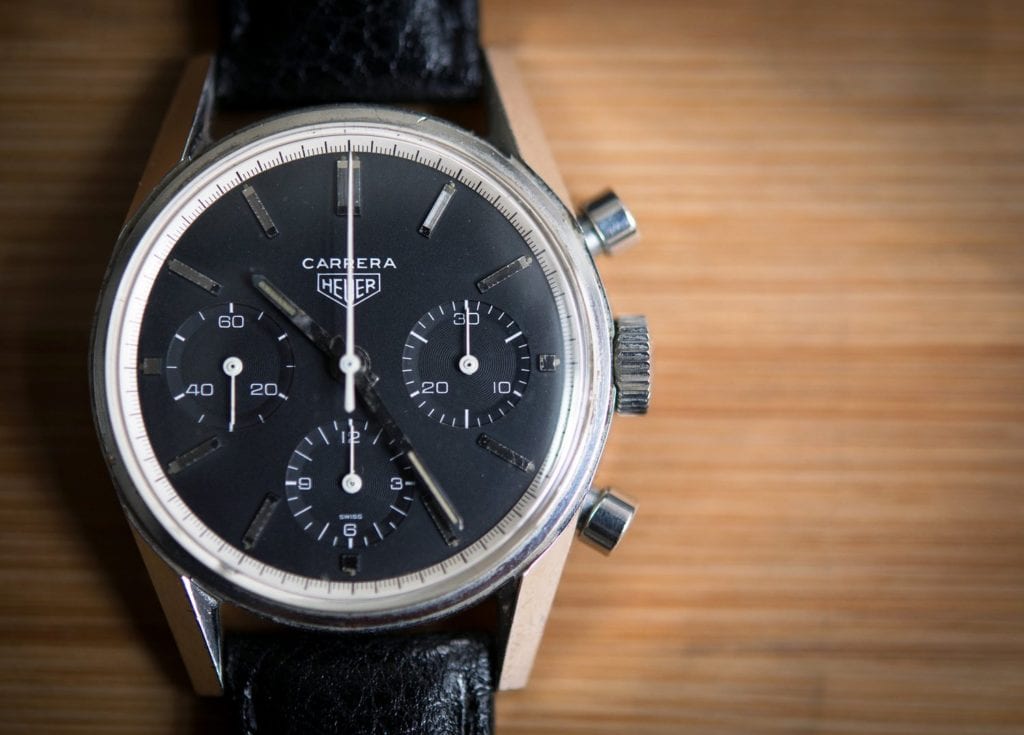
Unlike the Autavia, which had evolved from a racing stopwatch into a chronograph, the Heuer Carrera was designed from the ground up as its own watch. It had a clean, easy-to-read dial with none of the “unnecessary” features found on other chronographs.
At the time, Heuer was a small watchmaker that relied on other suppliers for many of its watch components. Instead of viewing this as a limitation, Jack Heuer found an opportunity: he could source the very best components for his new wristwatch to create something truly unique.
The first of these components was a steel tension ring designed to hold the watch’s crystal in place and improve its water resistance. Instead of marking the ⅕ second lines on the dial, Heuer asked that the demarcations be painted onto the tension ring to reduce clutter on the dial. Decades later, the painted and marked tension ring is one of the Carrera’s most iconic design features.
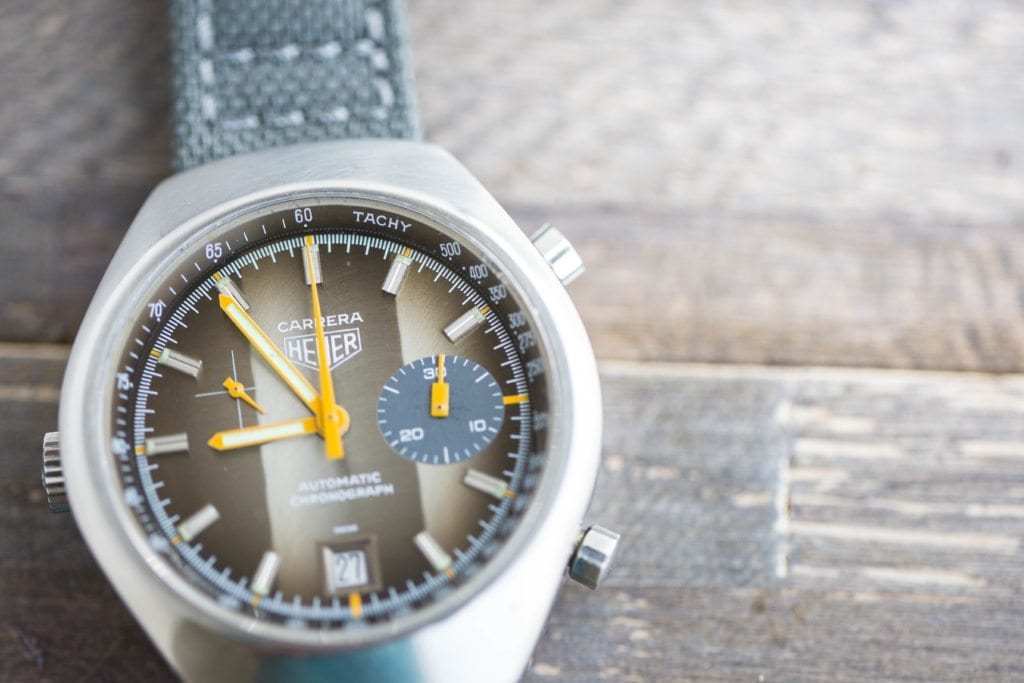
The case, sourced from Piquerez, with its long and obvious lugs, was another choice designed to signal a progression from Heuer’s older chronographs to the cleaner design of the Carrera.
Heuer introduced the Carrera in 1963, marketing it as a rugged, practical chronograph available from $89.50. Over the next year, the Carrera evolved into several unique models: the 12, Tachy, Deci, 45, and Carrera Black.
Over 50 Years On
Few watches have had such a significant impact as the Heuer Carrera. In the half-century since it was first shown to the world, the Carrera has grown into an iconic watch and a source of inspiration for many other watchmakers interested in creating clean, readable chronographs.
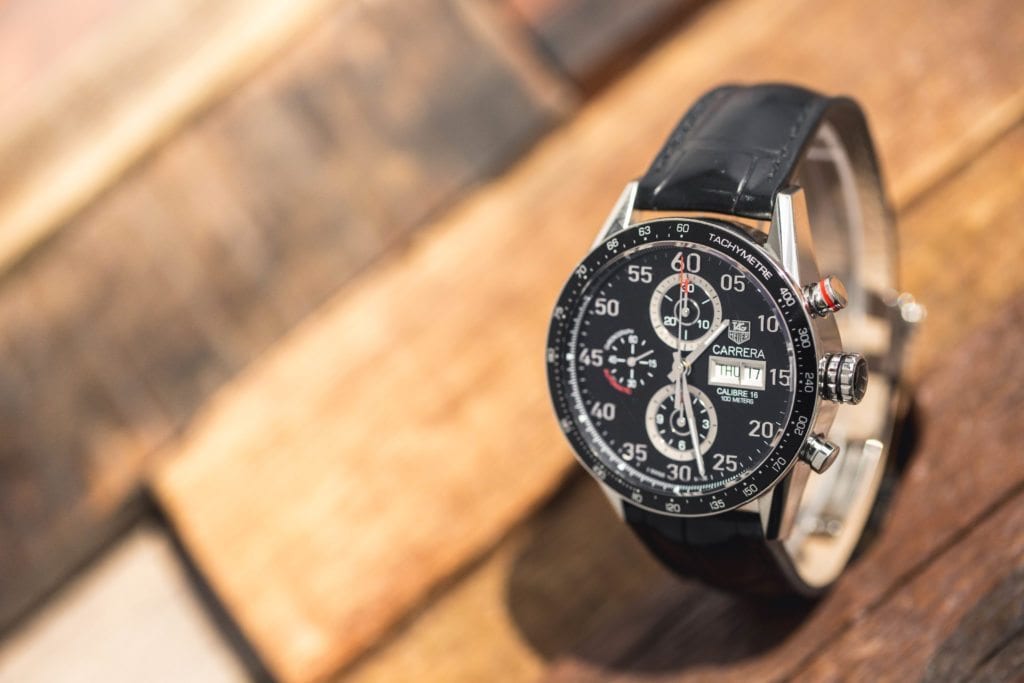
Heuer (now TAG Heuer) has updated the Carrera over the years, expanding its dimensions and adding new features and complications such as a tachymeter scale and a date. Despite its new look, the Carrera of today is still unmistakably the clean, stylish watch it was in 1963.
Image Credits: Header; Hooniverse. 1; Redbull. 2; Jalopy Journal. 3; Calibre11. 4; HODINKEE. 5-6; Crown & Caliber.
Get More Articles Like This in Your Inbox
We're constantly creating great content like this. So, why not get it delivered directly to your inbox? By subscribing you agree to our Privacy Policy but you can unsubscribe at any time.





